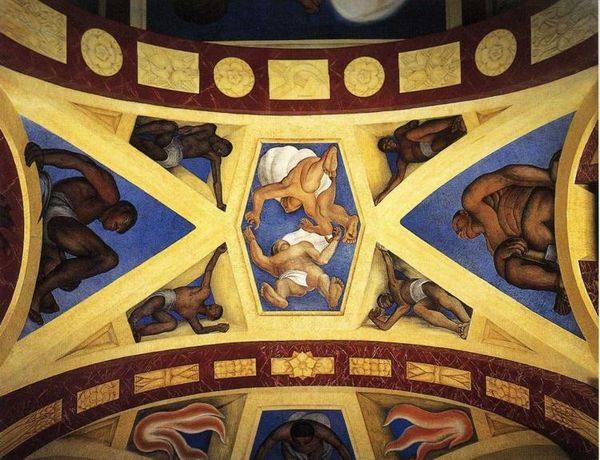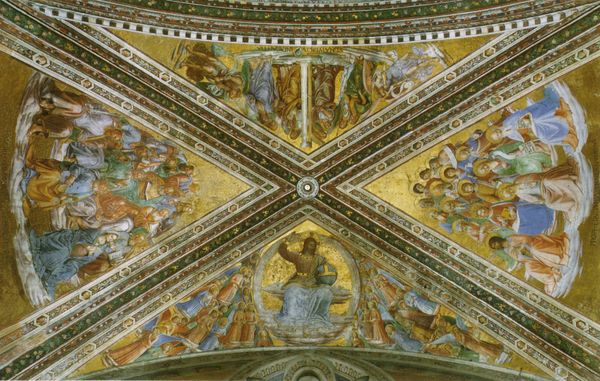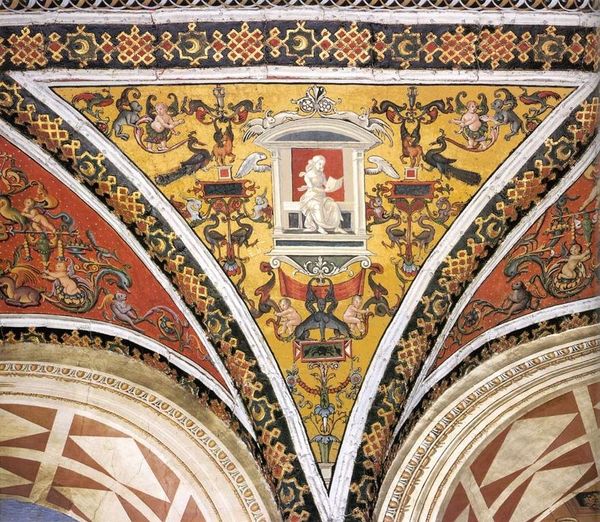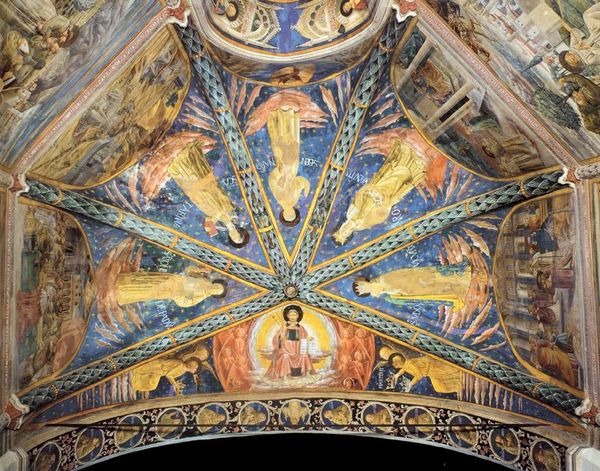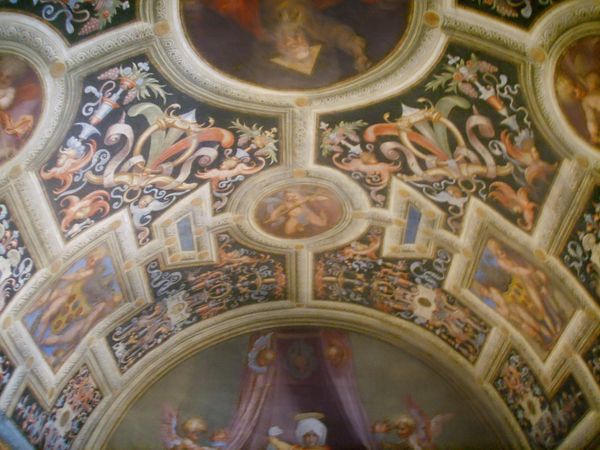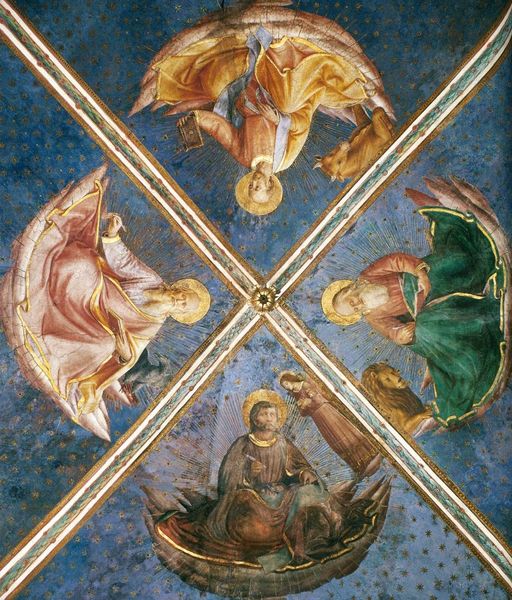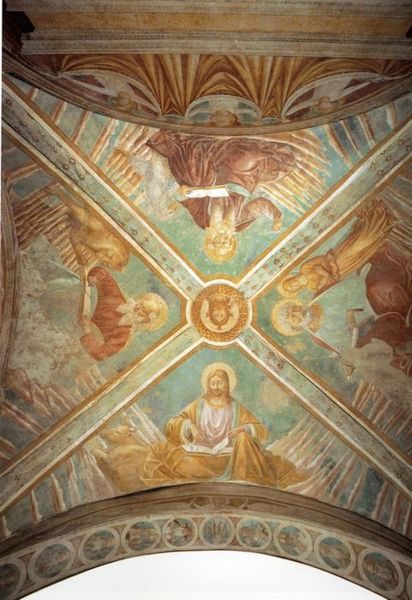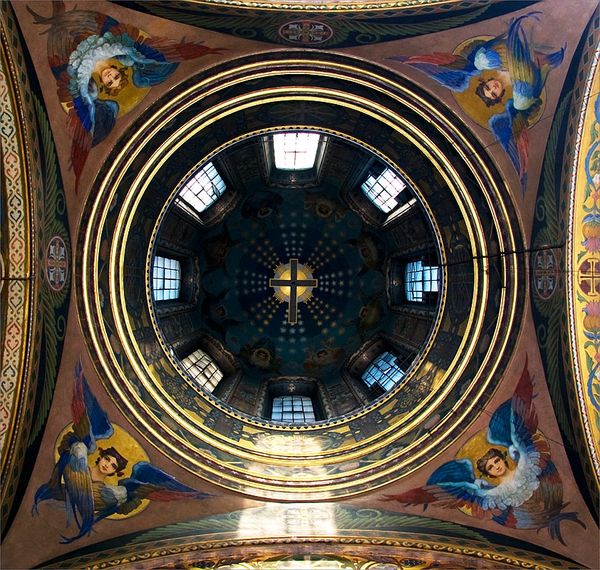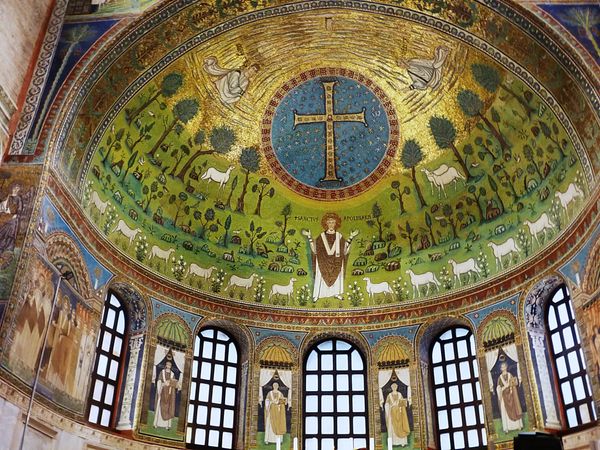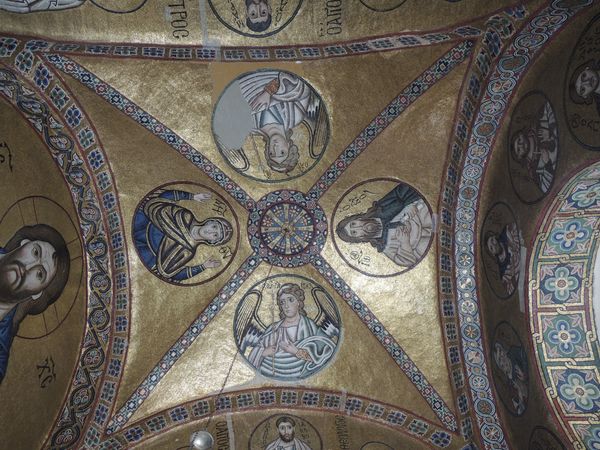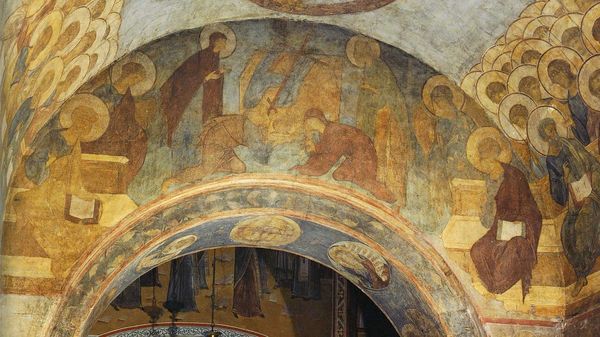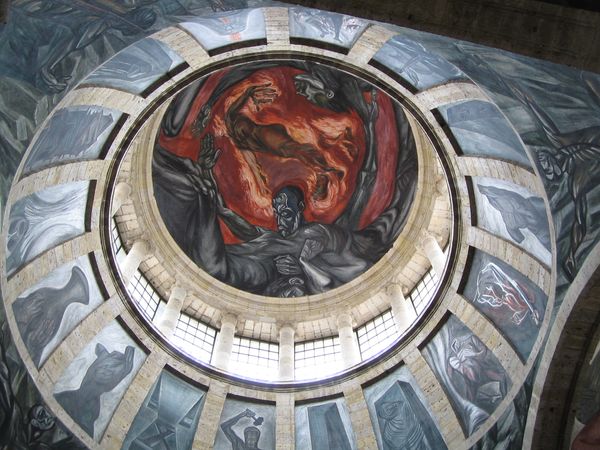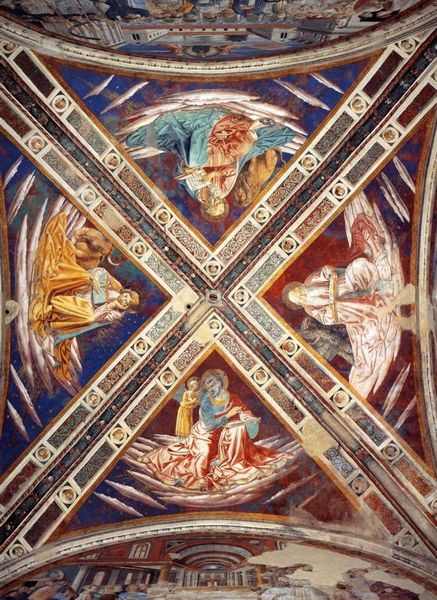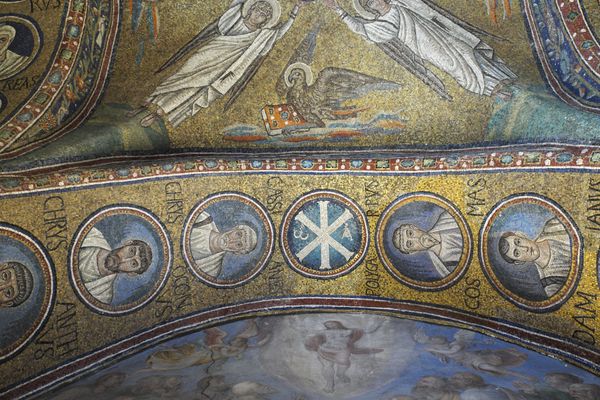
The Land's Bounty Rightfully Possessed 1926
0:00
0:00
diegorivera
Chapingo Autonomous University, Texcoco, Mexico
painting, fresco, mural, architecture
#
painting
#
landscape
#
holy-places
#
figuration
#
fresco
#
charcoal art
#
oil painting
#
mexican-muralism
#
history-painting
#
mural
#
architecture
Copyright: Diego Rivera,Fair Use
Curator: Let’s turn our attention to Diego Rivera’s fresco, "The Land's Bounty Rightfully Possessed" from 1926, which graces a space at the Chapingo Autonomous University. It's a strong example of his mural work in Mexico. Editor: It certainly grabs you with the angular composition of the sections, the somber blue tones playing against the intense figures. It evokes, to me, a kind of ancient map or astrological chart, something simultaneously terrestrial and celestial. Curator: Indeed, that rigorous structural quality of the layout guides the eye, wouldn't you agree? The geometry, this interlocked star, dictates the arrangement of human figures. Note, too, how each triangular panel almost operates as a contained compositional unit. It reminds me of the visual syntax we see in Cubism or even Futurism. Editor: Yes, that rigorous organization does draw the eye in and trap it! But the arrangement of the workers is far more important; the workers—farmers—each depicted with emblems like corn, hoes and seeds, remind us of a pre-conquest world connected deeply to symbols of renewal, struggle, and sustenance from the land. I also sense echoes of earlier pagan gods associated with harvesting, the corn maiden and her ilk. The composition serves the narrative of rightful ownership! Curator: It is interesting you should read the narrative this way; my interpretation is that the angular divisions contribute to the formal abstraction. The bodies become shapes and are subjected to Rivera’s structuring framework. And consider the fresco as medium: that direct application to the architectural surface eliminates any illusory depth, intensifying the focus on the spatial organization of discrete volumes. Editor: While I acknowledge the importance of form and structure, I see this arrangement functioning within a much larger context of indigenous symbols and cultural rebirth following periods of colonisation. Note the centrality of the agrarian hand: The tools signal that Mexican history is intimately linked with agriculture as sustenance, freedom, and resistance against exploitation. Curator: I can agree that his choice to portray Mexican history using his visual language is brilliant, it lends authority to the subject and highlights his political inclinations. Editor: It's quite clear that for Rivera, cultural continuity and history intersect—expressed formally, yes, but also as symbols of a national identity and narrative tied to a tangible landscape. The land, culture, and symbols become powerful forces for historical identity and recovery! Curator: A fascinating fusion indeed, where semiotics enhance spatial dynamics. Editor: Ultimately, both form and meaning converge in service to culture.
Comments
No comments
Be the first to comment and join the conversation on the ultimate creative platform.
